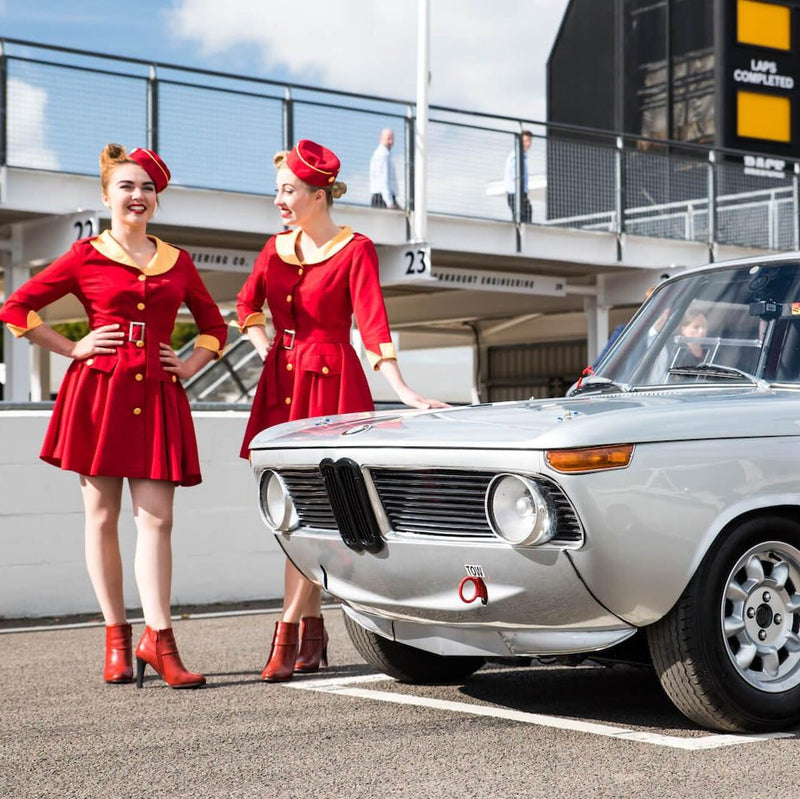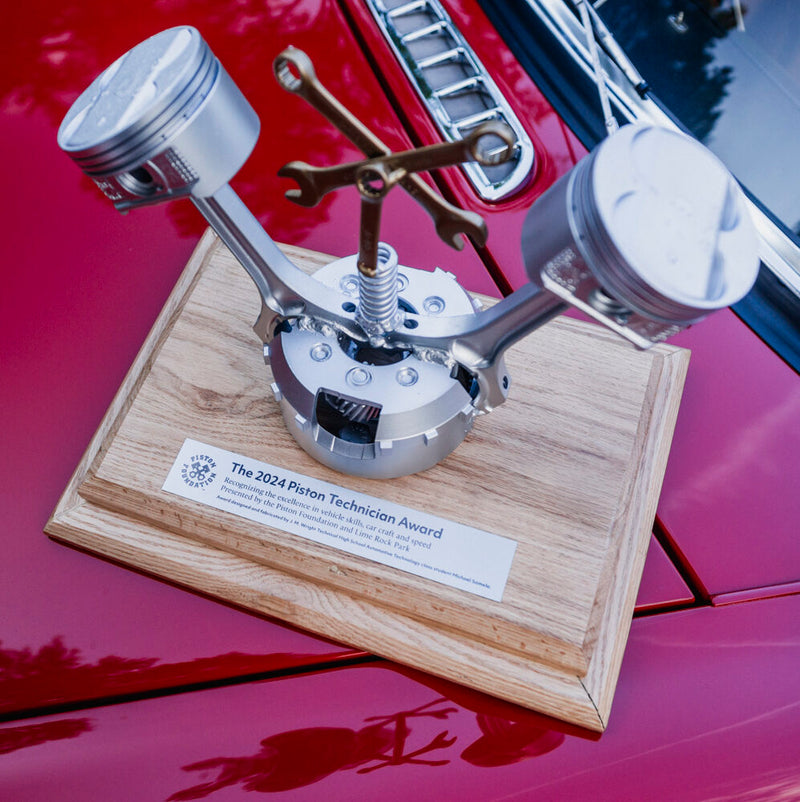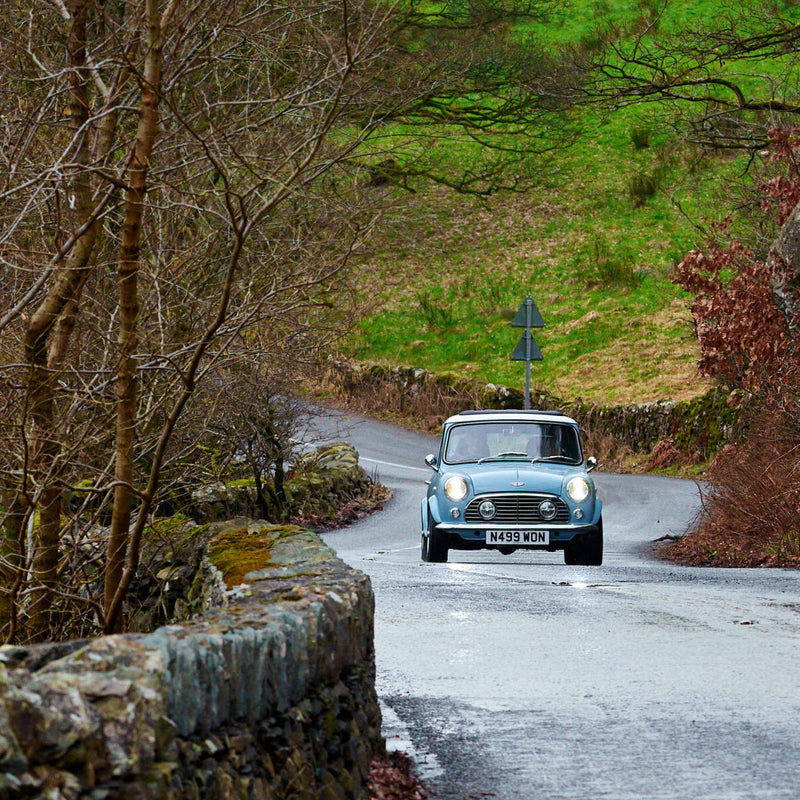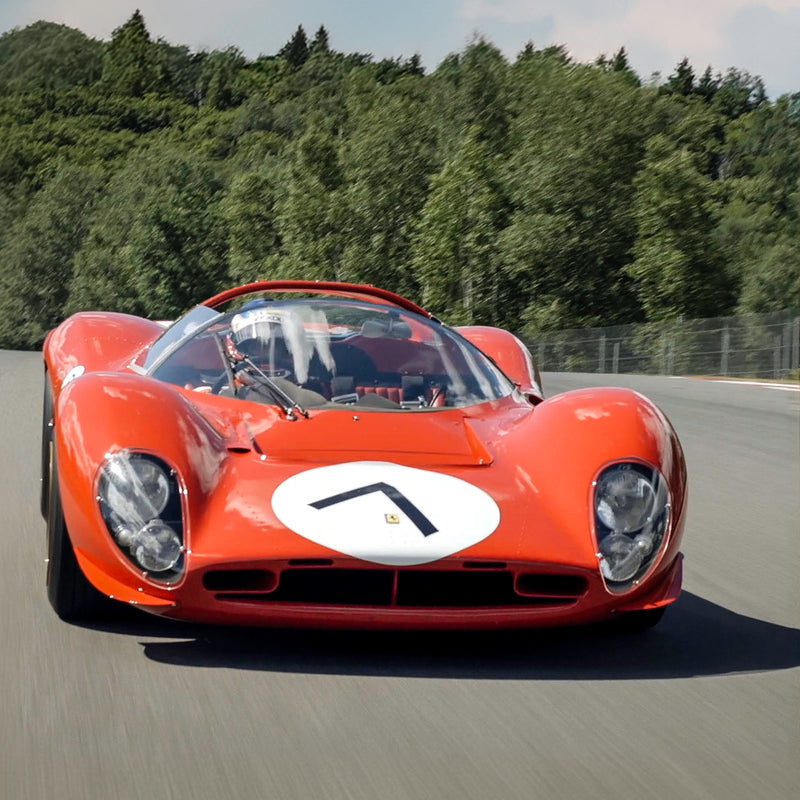Car enthusiasts have an innate love for mechanical things that can scare the pants off us in motion and make us fall in love at rest, and apart from wheel count there is very little that separates us from motorcyclists—we both create relationships with our transport of choice, assign personality and life to amalgamations of metal and rubber. Whether it is a car or a motorcycle occupying our thoughts makes no difference on a gut level, and I think you’d be hard-pressed to find people who are so firmly rooted in one camp that they can’t appreciate the other.
Each relationship we create with our cars, our bikes, builds a story made up of many moments: paths traveled, late night repair or modification sessions in the garage, and even the simple conversations we have with others on the subject add up to a mostly loving—but sometimes hateful—relationship.
The story of this Moto Guzzi and its rider is no different. The bike represents a dream long cultivated and without end in sight. From youthful longing and patience to then embark on a lengthy restoration, Giorgio is not so much in love with his Guzzi as he just deeply into it.




“Ever since I was a child, I’ve been attracted by motorcycles. I never understood why, or could never put it into words, but whenever I saw a vintage bike or a simple Vespa my heart began to beat faster. Chrome, polished aluminum, those bright paint schemes, they set a gear inside of me in motion and it hasn’t stopped.”
Sipping good coffee in a pretty place while weighing the pros and cons of the Vespa 50 Special as compared to the PK 50 Special (you can tell we weren’t in want of things to talk about), it’s hard not to get a little swept up in the idea of owning a motorcycle, but this is a feeling that Giorgio has even when he’s covered in grease in the garage at two in the morning.
He’s the type of person that includes doing your own wrenching in the definition of vehicle ownership, seeing maintenance and modification work as a means to “makes me feel closer to her“ Giorgio tells me, as he gestures toward the Moto Guzzi, “there’s a value to that that people might be missing out on, it’s something that is less common today, a little lost.”
As if cued, Giorgio extends an invite into the garage to show me something decades old that’s new to him. Inside, I am immediately struck by the degree of care he’s taken in arranging the tools, and it initially strikes me as more orderly than any true petrolhead’s private garage I’ve ever been to. But above the workbench I notice that despite the prop-like nature of the tools he’s lined up, he’s used them to bolt up the engine of a 50 Special that’s in its final stages of assembly.



That’s not what I’m here to shown, though, and there’s a shape under a red tarp that’s held my attention since we walked in. He’s being coy about it, so I ask the question I’m meant to.
Giorgio smiles and without answering me, removes the cover.
I look at the disarming red of the the Moto Guzzi (a 1952 Airone 250 Turismo) in silence for the first few seconds, then we get to the best part of a friend showing off something that you both appreciate. I learn that he’s restored it completely in-house/garage (mostly garage, but a little in the house too), and then he starts at the very beginning with the story of how this came to be.
The bike had been purchased by his grandfather sometime in 1960 or thereabouts, but due to family commitments and the waning ability to ride on like hell as he aged into his septuagenarian years, Giorgio’s grandfather set the bike aside in the garage.
“I remember I was five years old and it was the summertime, and for some reason especially during the hottest hours I used to ride my bike in the garage. One day I tripped over something and I must have moved the cover because I noticed something shining under the dusty blanket in that part of the garage. It was the front light and housing, and I removed the rest of the blanket to find a motorcycle under there. I ran straight to my father to tell him about my discovery,” Giorgio recalls with a smile.


“My father immediately realized that, for me, it was something extra special, so he decided to surprise me and stoke the interest. A few weeks later, he woke me up early in the morning and as we opened the front door of the garage I found before my eyes a beautiful red bike.
“He grabbed me in his arms and he sat me on the tank, and we started making endless rounds around the yard, and I think something definitely changed in me that day.” Giorgio would do his own restoration on the Moto Guzzi pictured here, and in that way that everyone who’s smitten with his car or motorcycle gets, he is quick to point out the labors of his love.


Between learning and doing the work himself, sourcing spare parts that were long ago no longer available first-hand, Giorgio’s restoration lasted about six years, but you can tell that it was worth the time to do it himself.
Giorgio says the most exciting moment was at the very end of those six years, when he started the rebuilt motor for the first time. If you have never started on older bike after you’ve opened up and resealed the motor, it is a rite of passage and a major relief. On this bike in particular, the rumble is so drawn out and the idle revs so low that you can count the number of turns of the crank.
Contrary to what one might think by looking at it, the Guzzi before you is no lightweight, at all, seeing as the tubular frame is made from iron. Road bikes in the 1950s still had a ways to go before the carbon fiber slices that today’s sport models are made of.


Giorgio goes on to tell me that besides swinging the weight around, riding the Airone is not always simple, especially if you are used to modern bikes, as on this one the gearshift pedal is on the right foot with the rear brake on your left in the opposite orientation from what’s standard nowadays.
Even if you don’t ride it then, this Moto Guzzi is still a wonderful machine to look at, and even if you don’t like the way it looks, the Airone story still has something to be said about it in terms of historical significance. The model was presented for the first time in 1939, and with the outbreak of the Second World War and production turning almost entirely to the military concerns, Moto Guzzi switched to providing different bikes better suited to the needs of the army, navy, and police.

In 1947 however, two new versions of the Airone were presented: the Turismo and then the Sport, which had a more powerful engine (with output soaring from 9.5hp to 12.0), and a sportier handlebar layout and riding position.
The dark rain clouds that have delayed us have parted before the sun’s gone down, and after some detail photos and with he light getting very nice indeed, Giorgio voices what I’m thinking, “Shall we go?”
I follow by car, and on this nostalgic Sicilian summer night we’ve decided to head out to a small piece of the Marsala hinterland that leads to Salemi, along an ancient road that runs through thick vines on both sides.
It aids the imagination as I try putting myself into the time when the bike I’m trailing was new: no signs, no guard rails, just an expanse of dirt road winding away and a land echoing slightly with the soft noise of the 250cc single-cylinder. It’s a sound one could get used to, and it’s a sight to see Giorgio riding the old Guzzi and leaning it through the hairpins that keep the sun spinning around the bike all evening, and though perhaps it sounds a bit cheesy, in that moment it really felt like the perfect physical metaphor for the revolutions of time wrapped up beneath the bright red paint.
























































